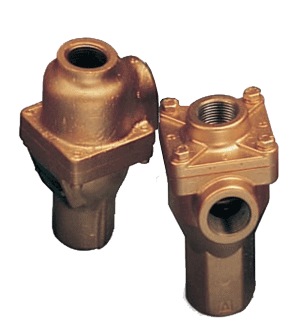| Termostatventiler Amot |
|
AMOT
Model C Thermostatic
Valves
|
|
BR
type valves
are fitted with a variable manual override
which allows a progressive opening of port A to C.
Manual override is often a requirement for Marine
applications.
Function. In
automatic mode the valve will control the
temperature automatically, but turning the adjusting nut
on top of the operator clockwise will cause the element
to move toward its hot (extended) position, regardless of
temperature. There is a position indicator on each
manual override which shows the element position
during manual operation. Each element assembly has its
own Manual Override.
Manual Override should only be used in case of an emergency
situation
-1.gif)
|
21.01.2013 |
